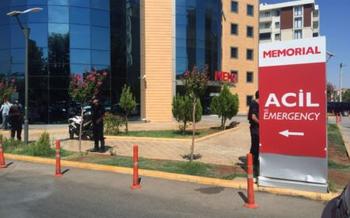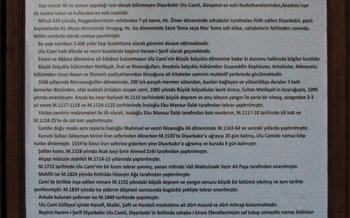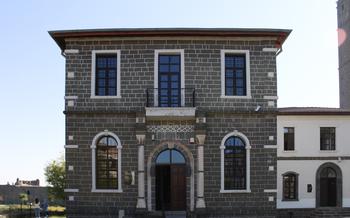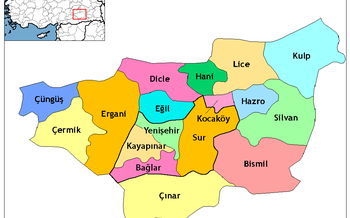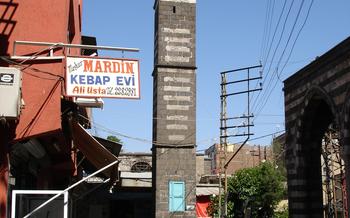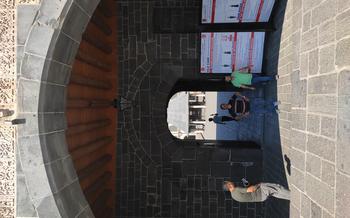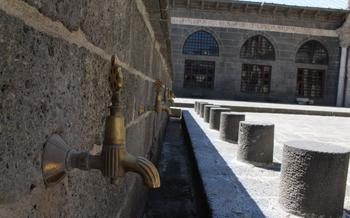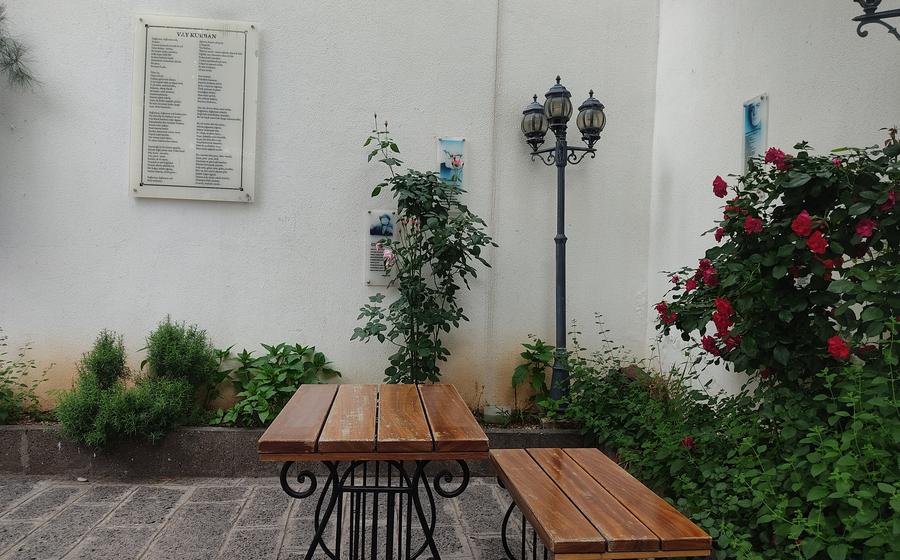
Batık City Ruins
- The Antiquity of Batık City Ruins
- Location and Accessibility:
- Historical Background
- Exploration of the Ruins
- Architectural Marvels of Batık City Ruins
- Religious Significance:
- Cultural Artifacts
- Local Cuisine
- Shopping for Souvenirs
- Accommodation Options
- Nearby Attractions
- Planning Your Visit
- Photography Opportunities
- Local Festivals and Events: A Celebration of Culture
- Insider Tip: Unveiling the Hidden Treasure of Batık City Ruins
The Antiquity of Batık City Ruins
In the heart of Anatolia, nestled amidst the fertile plains of Diyarbakır, lies the ancient city of Batık. Its ruins, a testament to its rich and storied past, stand as silent witnesses to the passage of time. Batık's origins can be traced back to the Bronze Age, when it served as a vital trading hub, connecting the east and west. Over the centuries, it flourished under the rule of various empires, including the Assyrian, Babylonian, and Roman. Excavations at the site have unearthed numerous artifacts, shedding light on the city's cultural heritage and daily life. The preservation of these ruins is of paramount importance, as they represent a tangible link to our shared history and serve as a reminder of the enduring legacy of ancient civilizations.
Location and Accessibility:
The Batık City Ruins are located in the heart of Diyarbakır, a city with a rich cultural heritage in southeastern Turkey. The ruins are situated within the city's ancient walls, near the iconic Diyarbakır Fortress and the Great Mosque. Visitors can easily reach the site by foot, taking a leisurely stroll through the narrow streets of the old town. Alternatively, they can opt for a short taxi ride from the city center. The city's strategic location at the crossroads of ancient trade routes made it a significant hub in the region, contributing to its historical importance and cultural diversity.
Historical Background
The history of Batık City is shrouded in mystery and intrigue, dating back to the annals of antiquity. Its foundation can be traced to the early civilizations that flourished in the region, leaving behind a rich tapestry of cultural influences. Over the centuries, the city witnessed the rise and fall of various empires, each leaving its mark on the urban landscape. From the mighty Assyrian Empire to the Hellenistic Seleucids and the Roman Republic, Batık City served as a strategic hub, connecting East and West.
During the Byzantine era, the city's fortifications were strengthened, transforming it into a formidable stronghold. However, its strategic location also made it a target for invaders. In the 7th century AD, the Arab armies swept across the region, conquering Batık City and ushering in a new era of Islamic rule. The city's fortunes continued to fluctuate under the Abbasids, Seljuks, and Mongols, each dynasty leaving behind its own unique imprint.
The Ottoman Empire's conquest of the region in the 16th century marked a period of relative stability and prosperity for Batık City. The city became an important administrative and commercial center, attracting traders and artisans from across the empire. However, by the late 19th century, the city's fortunes began to decline due to political and economic turmoil. The once-thriving metropolis was gradually abandoned, and its magnificent structures fell into ruin.
Exploration of the Ruins
Journey through the remnants of the ancient city, revealing the secrets of its past. Discover a labyrinth of streets, each leading to new wonders. Marvel at the towering fortifications that once protected this metropolis. Explore the temples, where echoes of ancient rituals still linger in the air. Unearth the foundations of homes and shops, offering a glimpse into the daily lives of long-lost inhabitants. Allow your imagination to transport you back in time as you wander through these ruins, witnessing the rise and fall of civilizations that shaped history.
Architectural Marvels of Batık City Ruins
Batık City Ruins stand as a testament to the architectural prowess of its ancient inhabitants. The ruins showcase a blend of architectural styles, reflecting the diverse cultural influences that shaped the city's history. Visitors can marvel at the intricate stone carvings, arches, and domes that adorn the structures, demonstrating the skill and craftsmanship of the city's builders. The use of local materials, such as limestone and basalt, adds to the authenticity and charm of the ruins. The unique architectural features of Batık City Ruins provide valuable insights into the engineering and design principles of its time, offering a glimpse into the ingenuity and creativity of ancient civilizations.
Studying the architecture of Batık City Ruins allows us to appreciate the cultural exchange and diffusion that occurred in the region. The ruins reveal influences from various civilizations, including the Romans, Byzantines, and Seljuks, who all left their mark on the city's architectural landscape. The combination of these influences resulted in a distinct architectural style that is characteristic of the region.
Exploring the ruins offers a journey through time, allowing visitors to trace the evolution of architectural styles and techniques. From the massive fortifications that protected the city to the intricate details of temples and residential buildings, Batık City Ruins provide a glimpse into the lives and achievements of its ancient inhabitants. The architectural marvels of the ruins stand as a testament to the enduring legacy of ancient civilizations and invite visitors to discover the rich history and cultural heritage of this captivating site.
Religious Significance:
The Batık City Ruins were religiously significant in ancient times. The city was home to several temples and other religious structures, each dedicated to different deities. These temples served as places of worship, where the people of the city would gather to pray and make offerings. The presence of these temples suggests that religion played an important role in the daily lives of the city's inhabitants.
One of the most notable temples in the ruins is the Temple of the Sun. This temple was dedicated to the sun god, who was considered the most important deity in the city. The temple was built on a hilltop, overlooking the city, and was decorated with elaborate carvings and sculptures depicting the sun god and his entourage.
Another significant religious structure in the ruins is the Temple of the Mother Goddess. This temple was dedicated to the goddess of fertility and childbirth. The temple was built in a cave, which was considered a sacred place by the people of the city. The temple was decorated with carvings and sculptures depicting the goddess and her symbols.
The presence of these temples and other religious structures suggests that religion played a vital role in the culture and society of the ancient city. Religion provided the people of the city with a sense of identity and belonging, and it helped them to connect with the divine.
Cultural Artifacts
Excavations at the Batık City Ruins have yielded a treasure trove of artifacts that provide valuable insights into the city's history and culture. Among the most notable discoveries are pottery shards, coins, jewelry, and tools that shed light on the daily lives and activities of the city's inhabitants. These artifacts offer glimpses into the city's economy, trade, and artistic traditions. Additionally, inscriptions and texts found on pottery and seals provide valuable information about the city's political and religious systems.
The artifacts discovered at the Batık City Ruins are not only significant for their historical value but also for their artistic merit. Many of the pottery shards feature intricate designs and patterns that showcase the skill and creativity of the city's artisans. Metal artifacts, such as jewelry and tools, often display fine craftsmanship and intricate detailing. These artifacts serve as tangible reminders of the city's rich cultural heritage and its contributions to the region's artistic landscape.
To ensure the preservation and accessibility of these valuable artifacts, the authorities have established a museum within the ruins. The museum houses a curated collection of artifacts, organized into thematic exhibits that provide context and interpretation. Visitors can explore these exhibits to gain a deeper understanding of the city's history, culture, and way of life. The museum also plays a crucial role in educating the public about the importance of cultural heritage and the need to protect and preserve archaeological sites.
Local Cuisine
Diyarbakır's cuisine is a testament to the city's rich cultural heritage, blending flavors from different civilizations that have graced this land. Savor the aromatic "mırra," a hearty soup made with lamb, wheat, and spices, that will warm your soul on a chilly day. Indulge in the tantalizing "çiğ köfte," a raw meat dish bursting with flavor, expertly seasoned with bulgur, tomatoes, and a hint of spice. For a taste of local delicacies, try "kaburga dolması," succulent lamb ribs stuffed with rice, herbs, and pine nuts, a dish that will leave you craving for more. Don't miss the opportunity to explore the city's vibrant street food scene, where you can sample an array of local delights, each a culinary masterpiece in its own right. Immerse yourself in the flavors of Diyarbakır, and let your taste buds embark on a journey through history.
Shopping for Souvenirs
Diyarbakır offers a vibrant shopping scene for those seeking unique souvenirs and local handicrafts. The city's bazaars and markets are a treasure trove of traditional items, from intricate copperware to colorful carpets and gleaming jewelry.
One of the best places to start your shopping journey is the historic Coppersmiths' Bazaar, where artisans showcase their skills in crafting exquisite copperware. From ornate trays and pots to decorative lamps and jewelry, you'll find a wide range of items to choose from.
For those interested in textiles, the city's carpet shops offer a dazzling array of hand-woven rugs and carpets. Each piece is a work of art, featuring vibrant colors and intricate designs that reflect the region's rich cultural heritage.
Jewelry lovers will find a paradise in Diyarbakır's gold and silver shops. From delicate filigree pieces to chunky statement necklaces, there's something to suit every taste and budget.
Remember to embrace the art of bargaining when shopping in Diyarbakır. It's a customary practice that allows you to connect with the locals and score great deals. Don't be afraid to haggle politely and have fun in the process.
By supporting local artisans and purchasing their handcrafted goods, you not only take home a piece of Diyarbakır's culture but also contribute to the preservation of traditional crafts and the livelihoods of the talented people who create them.
Accommodation Options
When planning your trip to Diyarbakır to explore the Batık City Ruins, you'll find a range of accommodation options to suit different budgets and preferences. For a convenient and immersive experience, consider staying at a hotel or guesthouse located near the ruins. This will allow you to easily access the site and explore it at your own pace. Several hotels and guesthouses are situated within walking distance of the ruins, offering comfortable rooms and amenities to ensure a pleasant stay. Whether you prefer a luxurious hotel with modern facilities or a cozy guesthouse with a local touch, you'll find options that cater to your needs. To ensure availability, especially during peak tourist season, it's advisable to book your accommodation in advance. This will guarantee a hassle-free arrival and allow you to focus on your exploration of the ancient city.
Nearby Attractions
Beyond the Batık City Ruins, Diyarbakır offers a wealth of other attractions that captivate visitors with their historical significance and cultural charm. The iconic Diyarbakır Fortress, a UNESCO World Heritage Site, stands as a testament to the city's rich past. Its imposing walls and towers have guarded Diyarbakır for centuries, silently witnessing the rise and fall of empires. History buffs can delve deeper into the city's heritage at the Diyarbakır Museum, which houses an impressive collection of artifacts from various civilizations that have shaped the region.
The Great Mosque of Diyarbakır, also known as the Ulu Mosque, is another must-visit site. This architectural masterpiece, with its intricate carvings and towering minarets, is a symbol of the city's religious devotion. Visitors can marvel at its stunning interior, adorned with colorful tiles and elegant calligraphy, and immerse themselves in the tranquility of this sacred space.
For those seeking a more immersive cultural experience, the Diyarbakır Bazaar is a vibrant hub of activity where locals and tourists alike come together to trade goods, sample delicious street food, and experience the city's vibrant atmosphere. Its labyrinthine alleys are lined with colorful stalls selling traditional handicrafts, spices, and souvenirs, offering a unique glimpse into the city's rich cultural heritage.
Planning Your Visit
To make the most of your visit to the Batık City Ruins, careful planning is essential. The best time to visit is during the spring or fall when the weather is pleasant and the crowds are smaller. Aim to spend at least two to three hours exploring the ruins, allowing ample time to wander through the streets, admire the architecture, and soak up the atmosphere.
Create a suggested itinerary that includes time for photography, exploring the nearby attractions, and enjoying a leisurely lunch at a local restaurant. Wear comfortable shoes suitable for walking on uneven surfaces, and bring water and sunscreen to stay hydrated and protected from the sun. Guided tours are available for those who prefer a more structured experience and want to learn more about the history and significance of the ruins.
Photography Opportunities
The Batık City Ruins offer a treasure trove of photo opportunities for enthusiasts of all levels. With its ancient structures, intricate carvings, and sweeping vistas, the site provides a picturesque backdrop for capturing stunning images. Visitors are encouraged to bring their cameras or smartphones to document their exploration and share their experiences with the world.
To maximize their photography experience, visitors should consider the following tips:
-
Golden Hour Magic: Plan your visit during the golden hours of sunrise or sunset to capture the ruins bathed in a warm, ethereal light.
-
Experiment with Angles: Don't be afraid to experiment with different angles and perspectives. Get low to capture the grandeur of the structures or climb to higher ground for panoramic shots.
-
Play with Light and Shadow: Utilize the interplay of light and shadow to create dramatic and atmospheric images. Look for opportunities to capture silhouettes or sunbeams streaming through the ruins.
-
Focus on Details: Don't overlook the small details that add character to the ruins. Close-ups of intricate carvings, weathered stones, or worn-out steps can make for compelling photographs.
-
Join a Photography Tour: For a more immersive experience, consider joining a photography tour or workshop led by local experts. These tours often provide insider tips and guidance on capturing the best shots.
Local Festivals and Events: A Celebration of Culture
Diyarbakır comes alive during its numerous festivals and events, showcasing the city's rich cultural heritage and vibrant traditions. One of the most significant events is the Diyarbakır Culture and Art Festival, held annually in May or June. This festival features a diverse range of performances, exhibitions, and workshops that celebrate the city's music, dance, art, and cuisine. Visitors can immerse themselves in the local culture by attending concerts, watching traditional dance shows, and participating in hands-on workshops.
Another highlight is the Diyarbakır International Short Film Festival, which takes place in October or November. This festival attracts filmmakers and film enthusiasts from around the world, showcasing a selection of short films that explore various themes and genres. Visitors can enjoy screenings, workshops, and discussions with filmmakers, gaining insights into the art of filmmaking and contemporary cinema.
For those interested in history and archaeology, the Diyarbakır Archaeology Days offer a unique opportunity to learn about the city's ancient past. Held annually in September or October, this event features lectures, exhibitions, and guided tours led by experts in archaeology and history. Visitors can explore the Batık City Ruins and other significant archaeological sites, gaining a deeper understanding of the region's rich cultural heritage.
Insider Tip: Unveiling the Hidden Treasure of Batık City Ruins
Amidst the captivating ruins of Batık City lies a secret spot, a hidden gem waiting to be discovered by adventurous travelers. Tucked away from the main tourist paths, this enigmatic location offers a glimpse into the city's lesser-known history and allure.
To reach this hidden treasure, follow the winding paths that lead deeper into the ruins. As you approach, the towering walls and intricate carvings hint at the secrets they hold. Enter through a concealed passageway, and you'll find yourself in a secluded chamber adorned with ancient inscriptions and forgotten artifacts.
Take your time to explore this hidden sanctuary, marveling at the stories etched into the stone. Imagine the lives that once filled these halls, the rituals performed, and the knowledge that was exchanged. This secret spot is a testament to the enduring spirit of Batık City, inviting you to connect with its past in a truly immersive way.
So, venture beyond the beaten path and seek out this hidden gem. Discover the secrets that lie within, and let the ruins whisper their tales to you. It's an experience that will stay with you long after you've left Batık City, a memory that will ignite your imagination and fuel your wanderlust for years to come.
